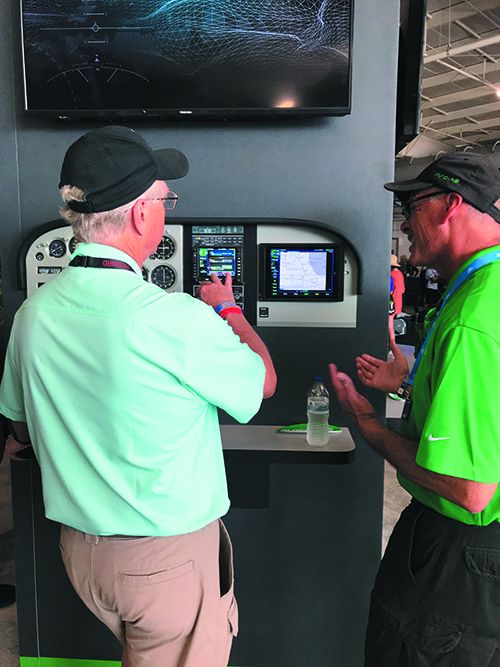Closely watching the announcements from AirVenture this past July, I was waiting for something different from the avionics world. You know, a new product that makes you say, “Now that’s what the market really wants,” but it was a bust. The short list includes products that hit the sweet spot on price, are relatively easy to install and have lots of modern tech that will stay fresh for at least seven years. Buyers want to spend their hard-earned dough on gee-whiz gear that not only modernizes the cockpit and adds utility and safety to their flying, but also tacks on some resale value to the aircraft. Not that there weren’t some attention-getting announcements (we’ll cover them in our AirVenture diary report coming up in the next issue), but news from the avionics world just seemed unremarkable to me, especially after a one-year show hiatus. There’s always next year, although if the supply chain problem worsens (and the pandemic ramps back up) as it appears it will, it could be another snoozer.
I first started going to the big show in Oshkosh in 1989 as a vendor, and for a long stretch of years it was consistently a feeding frenzy for avionics buyers—both panel and portable gear. Hot-selling Loran-C navigators morphed into GPS units, and buyers went to the show with pockets full of cash to score a smoking “show special” deal on the latest equipment from Northstar, Magellan, IIMorrow, Trimble and eventually Garmin. Even the used avionics market was brisk and shops brought truckloads of used gear to sell. The buying spike continued when the noise-canceling headset market came alive. Yes, Oshkosh was the place to buy expensive gadgets. I even remember some avionics shops doing basic installations in the parking areas. It’s just different now, and I wonder why many companies don’t seem to have a finger on the pulse of the typical avionics buyer. I’m talking about the buyer who makes the big upgrade every ten years, or thereabouts. Some vendors deserve a tip of the editorial cap for dialing it in.
In talking with Avidyne’s Dan Schwinn ahead of AirVenture this past July, it was obvious that he simply understands that short list of buyer demands. A poster child is Avidyne’s new Vantage retrofit flight display announced for AirVenture, which should be ready for prime time early next year. Avidyne is initially targeting Cirrus models with its new Vantage displays, and it looks to be exactly what owners of early SR models want: an easy upgrade (easy is always a relative word when it comes to avionics projects) to modern flight displays without having to completely rewire the aircraft to make it all work. The drop-in concept has worked we’ll for Avidyne and its IFD-series navigators, which use nearly all of the wiring that’s in place with existing Garmin GNS 430 and 530W GPS systems. I think plug-in Vantage displays will be we’ll received, although the new 12-inch screens won’t fit in a Cirrus without replacing the instrument panel.
Meanwhile, over at BendixKing, the company is working on a new STC to install the AeroCruze 100 autopilot in the fleet of aging Mooneys. While I applaud the effort, and welcome the competition, what I hoped for was a direct slide-in replacement for the KFC150 autopilot that’s growing tired in many Mooneys. Instead, the AeroCruze 100 (which started life as a TruTrak autopilot before Honeywell bought the company in 2019) requires all new wiring, new servos and has a different sized control head. That’s going to mean substantial teardown and downtime, and if the company listens to the majority of buyers, that’s likely not what they want. —Larry Anglisano





